Enhancing institutional capacity of public authorities and stakeholders and efficient public administration.
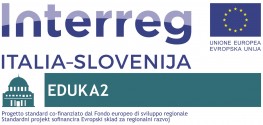
The project aimed to strengthen the capacity for institutional cooperation within the education sector. The mobilised public authorities included schools and universities, along with key players like research centres, and minority national and linguistic bodies involved in teaching. The project aimed to plan and implement joint solutions to common challenges, with a particular focus upon the development of joint governance tools and shared teaching models.
The project addressed the common challenge of the education sector’s poor capacity for cross-border cooperation. The project’s general objective was to improve this capacity by creating joint governance tools and shared educational and training models in order to help change the current situation. In particular, the foreseen measures benefitted the schools and universities within the Program area through three Outputs.
The first involved the creation of a Strategic Document of shared teaching models containing guidelines, common methods, and shared contents on cultural, linguistic, environmental and naturalistic issues, which was created within the context of a cross-border partnership network made up of schools, universities, research centres, and minority national and linguistic bodies. The second entailed the establishment of a shared training process for teachers, which implemented the transfer of the aforementioned teaching models into the school and university environment. The third Output involved the preparation of a joint strategic Document between the universities and the stakeholders in order to more easily manage the administrative procedures for the recognition of degrees and professional qualifications for cross-border students and graduates in the education sector, by providing for the creation of materials and support services for universities, and simultaneous training for operators. The project’s proposed approach of establishing a “network” among school teachers, university professors, researchers and operators was indispensable in order to strengthen cross-border cooperation in the target sector, as it served to bring together the advanced theoretical knowledge and “field” experiences gained in both countries. In terms of disseminating technologies in the education sector, and promoting the use of on-line teaching materials and e-learning, the project was also original and innovative.
1. THE DIDACTIC UNITS
The outputs consist of 41 didactic units EDUKA2 for schools in Slovene, Italian and Friulian languages. The didactic activities promote cross-border meetings and exchanges and the use of interactive and multimedia tools. The didactic units were realized by a team of more than 60 teachers and researchers. Members of the network included 31 schools, three universities and three research centres, all of whom signed the Strategic Document of Common Educational Models. In order to disseminate the knowledge and didactic models in schools, 28 seminars took place with 300 teachers participating.
1.1 Learning units to work with “cross-border classes"
The learning units aimed at working with “cross-border classes" facilitate the acquisition of knowledge regarding the common cross-border area and its environmental and naturalistic issues in detail, as well as architectural, archaeological, historical, cultural, art and language matters. The learning unit (in the Slovene and Italian languages) Čezmejni razredi. Skupne didaktične poti za šole čezmejnega območja / Classi transfrontaliere. Percorsi didattici comuni per le scuole dell'area transfrontaliera treats the historical, cultural, architectural, linguistic and naturalistic characteristics of the urban centres of Koper/Capodistria and Muggia (Milje) as well as of the Beka Regional park with the villages of Ocizla and Klanec. The material includes exercises, treasure hunts, descriptions of the didactic paths and an interactive didactic game Sosedujmo 2 / Viciniamoci 2. The material can be used for classes of geography, history, natural sciences and the Slovene and Italian languages. The target group are pupils from the 8th and 9th classes in primary schools in Slovenia and pupils from the 2nd and 3rd classes of lower secondary schools in Italy.
The learning unit (in Slovene and Italian) Čezmejni valovi / Le onde transfrontaliere is made up of exercises to discover the urban and naturalistic centres of Koper/Capodistria, Muggia (Milje) and Strunjan/Strugnano and to study their historical, cultural, naturalistic and geographical characteristics, as well as by an interactive didactic game Igra burje 2 / Il gioco della bora 2. The material can be used in classes of sociology, geography, history, natural sciences, Slovene and Italian languages. The target group are pupils of the second cycle from primary schools in Slovenia and pupils from the 4th and 5th classes from lower secondary schools in Italy.
1.2 Learning units supporting the teaching of Slovene in Slovene kindergartens and schools in Italy
The didactic tools aiming at supporting the teaching of Slovene in kindergartens and schools with Slovene as the language of instruction in Italy deal with everyday language situations and contents which are usually excluded from the common learning plans. The aim of these tools is to develop the linguistic competences of the speakers and enforce their communicative abilities. The learning units Radi potujemo (We Love Travelling), Denar in dom (Money and Home), Zmigaj se! (Let's Move! – Parts one and two), Videoigrice in tehnologija (Videogames and Technology) and Varstvo okolja, naložba v prihodnost (Environmental Protection, an Investment in the Future) are meant for lower secondary schools in Italy where Slovene is the language of instruction and the bilingual Slovene-Italian school and for upper secondary schools in Italy where Slovene is the language of instruction. The didactic material aims at enlarging the Slovene vocabulary through exercises including real examples, with a focus on different occurrences of linguistic contact with Italian.
The learning units Hrana (Food), V stanovanju (At Home) and Moje telo v prostoru (My Body in Space) are meant for primary schools in Italy where Slovene is the language of instruction and for the bilingual Slovene-Italian schools in Italy. Pupils learn the vocabulary about healthy nutrition and various types of food. They enhance their knowledge of Slovene words for household appliances and activities at home. They develop enthusiasm for sport activities and movement and they learn the related vocabulary.
The learning units Hrana (Food), Oblačila (Clothes) and Moje telo v prostoru (My Body in Space) for kindergartens promote knowledge of vocabulary and its use in the related areas through the use of different pedagogical tools and methods, as well as learning specific terminology.
Some brief videos were created for primary schools and kindergartens to show how children learn the different proposed content.
1.3 Learning units supporting the teaching of Italian in Italian kindergartens and schools in Slovenia
The didactic material to support the acquisition of Italian in kindergartens and schools where Italian is the language of instruction in Slovenia is made up of 10 learning units which promote the enlargement of Italian vocabulary and its local dialect.
The learning units Alla scoperta della Baia di San Canziano (Let's Discover the Škocjanski zatok/San Canziano Bay), Alla scoperta di Capodistria (Let's Discover Koper/Capodistria), Capodistria, ieri e oggi (Koper/Capodistria between Past and Present), I mestieri di ieri e di oggi (The Professions between Past and Present) and Istituzioni culturali della nazionalità italiana sul territorio (The Cultural Organisations of the Italian Nationality in the Territory) spread in depth knowledge on the cultural and naturalistic heritage of the Istrian region and the cross-border Slovene-Italian area.
The learning units I doni dell' Istria (Istrian Gifts), Scipio Slataper, Il mio Carso (Scipio Slataper, My Carst) and Elena Bulfon Bernetič, L’albero di Natale di Anna (Elena Bulfon Bernetič, Anna's Christmas Tree) stimulate reading and analysis of Italian authors from this area.
The learning units Le quattro stagioni – L’albero vanitoso di Nicoletta Costa (Four Seasons –Nicolette Costa's Vanity Tree) and I fenomeni atmosferici – La nuvola Olga e il temporale di Nicoletta Costa (The Weather – the Nicolette Costa's Cloud Olga and the Storm) promote learning of vocabulary through music and body language.
1.4 Learning units in the Friulian language
The working group promoting the teaching of the Friulian language through the CLIL model (Content and Language Integrated Learning) created 12 learning units for pedagogical activities with Friulian as the language of instruction. They target Italian schools in the provinces of Gorizia, Udine and Pordenone where Friulian is taught. The learning units Musiche, colôrs, emozions (Music, Colours, Emotions) and Flaba par gno fradi piçul (A Fairy Tale for my Little Brother) are suitable for kindergartens. There are eight learning units for primary schools: L’aur da la fatorie (The Farm's Gold), Il Friûl magjic (Magic Friuli), Tal zardin de scuele o ai scuviert che… (In the School Garden I Discovered…Come i fasui inte cite… (Like Beans in the Saucepan), I cavalîrs a àn il non cun se (Silkworm's Name), Sore e sot aghe (On and Under the Water), Gjoldi il fûc (Let's Enjoy the Fire) and Aghe e aiar (Water and Air). The learning units Jerbis par preâ, jerbis par curâ (Herbs for Praying, Herbs for Healing) and La poesie e il viaç (Poetry and Travelling) target lower secondary schools.
1.5 Two textbooks and a digital literary itinerary on minority literature and literature in the cross-border area between Slovenia and Italy
Two anthologies on minority literature and literature in the cross-border area in the Slovene, Italian and Friulian languages are based on the regional comparative approach.
The chapters of the textbook in Slovene, Italian and Friulian Literatura na stičišču 1 / Letterature a contatto 1 / Leterature a contat 1 (Contact literature 1) deal with various themes specific to the Programme area: the soil, agricultural life, rivers, the 1976 earthquake, migrations, identity, the border between Gorizia (Gorica) and Nova Gorica, the literal spaces in Gorizia (Gorica).
The textbook in Slovene and Italian Literatura na stičišču 2 / Letterature a contatto 2 (Contact literature 2) targets students from the final classes of the secondary schools in Slovenia and the upper secondary schools in Italy. The introductory chapters are dedicated to specific Slovene literature in the Trieste (Trst) area and to specific Istrian-Triestine literature. The third chapter deals with texts in a comparative perspective, i.e. with pieces of literature written by minority members, namely Italian literature in Istria and Slovene literature in Trieste (Trst). The final chapters are dedicated to literature written by German women in Trieste (Trst).
Two learning units are presented as digital literal itineraries in Duino (Devin), Gorizia (Gorica) and Trieste (Trst). They aim to enrich the literature lessons in primary and secondary schools in Slovenia and lower secondary schools in Italy. The literal point of interests of the three areas are located with geographic coordinates with descriptive web pages.
1.6 A learning unit on the didactics of contact languages and the teaching of Slovene and Italian as neighbouring languages
The didactic unit Naša ekošola / La mia scuola ecologica (My Ecological School) in Slovene and Italian is dedicated to teaching methods of Slovene and Italian as neighbouring languages through personal and virtual contacts between the pupils from schools with a majority language as the language of instruction, namely the Slovene schools in Slovenia where Italian is taught, and the Italian schools in Italy where Slovene is taught.
2. TRAINING E-COURSES
The training e-courses ensure that knowledge is transferred and the teaching models developed by the network EDUKA2 are disseminated.
The training courses, which are available on the project's web page www.eduka2.eu, took place during the project with 28 educational meetings – front lessons, workshops and interactive seminars – with more than 300 teachers participating.
The training courses are also available on-line. They address the teachers and other educators from the Programme area. There are 5 different training e-courses.
2.1 A training e-course on teaching in border areas, focussing on the use of learning material about cross-border classes with the pupils and literature produced by the communities in the cross-border area. The course is divided in three parts and addresses the teachers at:
2.2 A training e-course on the teaching of the Slovene language for teachers working in schools with Slovene as the language of instruction in Italy: it includes a theoretical part which offers basic information about the newest models and methodologies, as well as about contemporary research on linguistic didactics in cross-border areas; it includes also three specific parts targeting kindergartens, primary and lower/upper secondary schools. The course enables teachers to work with the didactic tools developed by the project EDUKA2.
2.3 A training e-course on the teaching of the Italian language for teachers working in schools with Italian as the language of instruction in Slovenia: is structured as the above-mentioned training e-course on the teaching of the Slovene language for teachers working in schools with Slovene as the language of instruction in Italy.
2.4 A training e-course for teachers working in schools where Friulian is taught in Italy: focus on teaching techniques to promote the use of the Friulian language across the curriculum through the CLIL model (Content and Language Integrated Learning). It addresses teachers who are interested in promoting minority language skills in the frame of the existing learning plans. It enables teachers to understand the importance of teaching a minority language as the language of instruction and the characteristics of such a method, to discover the didactic tools developed by the teachers in the frame of the project EDUKA2, and to create the conditions for successful networking among teachers and promote cross-border cooperation.
2.5 A training e-course on the didactic of contact languages and the teaching of neighbouring languages: enables teachers to work with the didactic models for teaching Slovene and Italian as neighbouring languages through personal and virtual contact between the pupils from schools with a majority language as the language of instruction, namely the Slovene schools in Slovenia where Italian is taught (the third cycle of the primary schools), and the Italian schools in Italy where Slovene is taught (lower secondary schools).
3. TOOLS TO SUPPORT STUDENTS AND GRADUATES FOR THE RECOGNITION OF STUDY AND PROFESSIONAL QUALIFICATIONS ACQUIRED IN THE NEIGHBOURING COUNTRY
Among the activities to improve the administrative workflow for the recognition of academic and professional qualifications held by cross-border students and graduates, a manual and model for consultancy and information for students were created. The seminar was attended by 27 administrative clerks from university enrolment offices and career centres. The three university’s project partners signed the Strategic Document with Guidelines for Support to Cross-Border Students and Graduates.
The exchange of knowledge and experiences within the cross-border teams made up of researchers and teachers made possible the creation of specific didactic material for schools in the Programme Area as well as orientation and information tools to improve the work and educational conditions of cross-border youth.
The e-learning and didactic tools as well as tools to support cross-border students and graduates are available after the project concludes at www.eduka2.eu. The contents and methods of the EDUKA2 project could easily be transferred to other European contact regions where different cultures and languages co-exist.
ASSOCIATED PARTNERS
Lead Partner
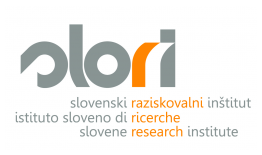
Project partner 1
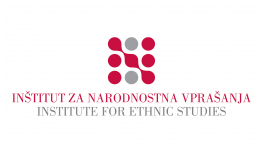
Project partner 2
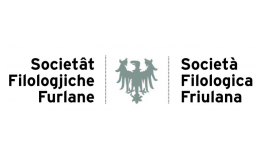
Project partner 3
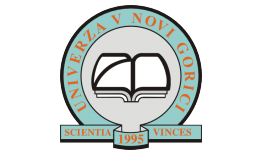
Project partner 4
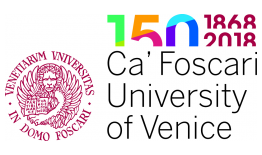
Project partner 5
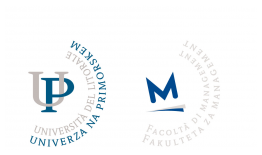
MAIN OBJECTIVE OF THE PROJECT
The project aimed to strengthen the capacity for institutional cooperation within the education sector. The mobilised public authorities included schools and universities, along with key players like research centres, and minority national and linguistic bodies involved in teaching. The project aimed to plan and implement joint solutions to common challenges, with a particular focus upon the development of joint governance tools and shared teaching models.
PROJECT IMPLEMENTATION (30/04/2019)
The outputs consist of 41 didactic units for schools in Slovene, Italian and Friulian languages. The didactic activities promote cross-border meetings and exchanges and the use of interactive and multimedia tools. The didactic units were realized by a team of more than 60 teachers and researchers. Members of the network included 31 schools, three universities and three research centres, all of whom signed the Strategic Document of Common Educational Models. In order to disseminate the knowledge and didactic models in schools, 28 seminars took place with 300 teachers participating.
Among the activities to improve the administrative workflow for the recognition of academic and professional qualifications held by cross-border students and graduates, a manual and model for consultancy and information for students were created. The seminar was attended by 27 administrative clerks from university enrolment offices and career centres. The three university’s project partners signed the Strategic Document with Guidelines for Support to Cross-Border Students and Graduates.
The exchange of knowledge and experiences within the cross-border teams made up of researchers and teachers made possible the creation of specific didactic material for schools in the Programme Area as well as orientation and information tools to improve the work and educational conditions of cross-border youth.
The e-learning and didactic tools as well as tools to support cross-border students and graduates are available after the project concludes at www.eduka2.eu.